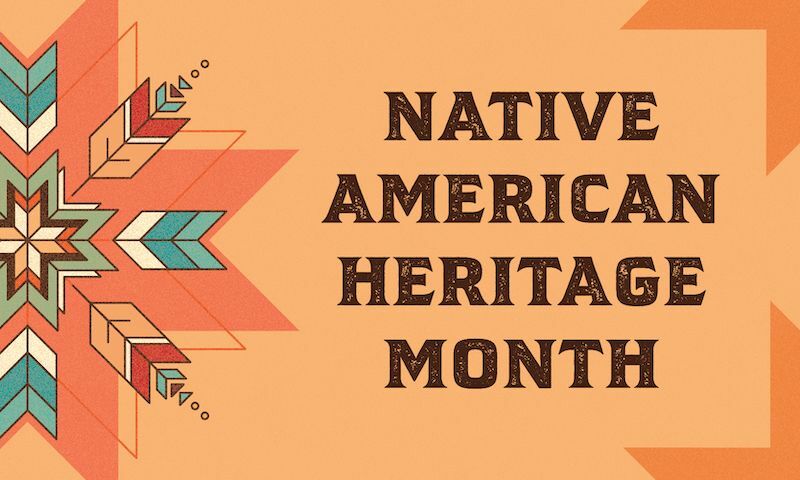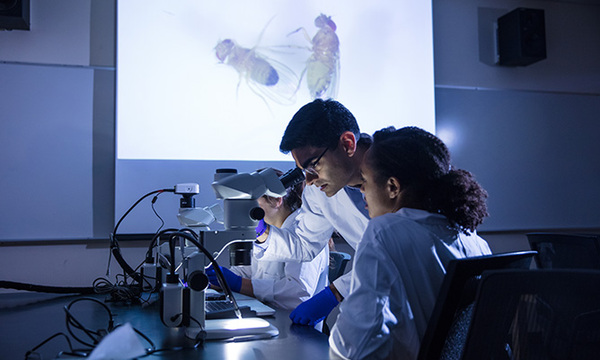How much do you know about Native American people? How well do you understand their culture and their history or the triumphs and challenges that they face today?
Native American Heritage Month, celebrated each November, reminds us of the importance of learning, recognizing and acknowledging the history and culture of America’s indigenous people. By deepening our cultural understanding, we can increase our empathy for others, value our differences and better follow Christ’s example to love others as ourselves.
At Biola University, we know and recognize that each person was made in the Imago Dei, and we recognize the intentionality of God's creativity among humanity. Through the series of questions and answers below, we hope to provide you with a moment to pause and learn more about Native American heritage. When we take the time to learn about one another, we can love better and praise God for the ways in which each of us is fearfully and wonderfully made.
Below are some frequently asked questions that we curated for the community from online resources.
How many Native Americans are there in the U.S.?
Before Columbus arrived, the estimated population of North America was 1,000 tribes, representing 20 million people. According to USAGov, today, there are 574 federally recognized Indian tribes in the United States. In 2019, there were an estimated 6.9 million people classified as American Indian and Alaska Native alone or in combination with other ethnicities (U.S. Census Bureau). There are approximately 150 tribal languages still spoken in the U.S. today thanks to revitalization efforts (First Nations Development Institute).
What people are indigenous to Los Angeles?
The Tongva tribe has been indigenous to the Los Angeles area for more than 10,000 years. They lived in 31 known tribes in 100 villages throughout the Los Angeles Basin down to Orange County and on Catalina and the San Clemente Islands. The Los Angeles Times has conducted a mapping project of the Tongva Villages, where you can see how the land was used before modern times. Several city names in the San Gabriel foothills originate from the Tongva language, including Rancho Cucamonga, Azusa, Pacoima, Tujunga, Topanga and Jurupa.
After the Mission San Gabriel was founded in 1771, the Spanish gave the indigenous people the name Gabrieliños. Many worked and lived as slaves at the mission and left behind their villages, language and culture. In the early 1900s, scholars began to revitalize and document the Tongva language and today there are efforts to teach the spoken language. An estimated 3,000 descendants of the Tongva live in California today.
One of the few surviving records of the Tongva language includes the Lord’s Prayer. The Lord's Prayer is called 'Eyoonak in Tongva and it was preserved through old Mission records.
What is a powwow?
According to The Red Road and Powwows.com, a powwow is a Native American celebration that consists of drumming, singing and dancing. It is a time when diverse indigenous nations gather with family and friends to honor the traditions of their ancestors. Many songs are still sung in their traditional language, which helps remind participants of their rich heritage. Events consist of traditional and competition dancing with prizes being offered. Each one begins with a Grand Entry when all dancers enter the circle. Each tribe has their own customs, and the culture continues to be vibrant and changing. While some events are private, many are open to the public.
What are reservations?
Reservations are designated areas of land for Native American tribes in the United States. Reservations were formed with the signing of treaties between the U.S. government and various tribes. Today there are 326 tribal reservations, according to The Red Road.
This article from History.com explains how the reservation system has a sad and complicated history of removing Native Americans from their lands, forcing them to live in confined farmland and encouraging them to assimilate to mainstream culture. The Indian Reorganization Act of 1934 sought to give tribes autonomy to self-govern, return surplus land, restore Indian culture and provide federal support.
Modern reservations are sovereign and not subject to most federal laws, although they receive financial support from the federal government. However, living conditions are not ideal and many suffer from poverty, low-quality housing, food insecurity, and lifestyle-related diseases such as heart attacks and diabetes. Despite the challenges, Native Americans continue to hold on to their heritage and thrive as a community.
Do Native Americans celebrate Thanksgiving?
Thanksgiving is a complex holiday for Native Americans, according to Native Hope. Many hold the opinion that Americans have been taught only a one-sided version of a peaceful feast between the Pilgrims and the Wampanoags. This story shifts the focus away from the many years of oppression and genocide that came from the arrival of settlers in North America. For this reason, many Native Americans consider the holiday to be a day of mourning and protest.
However, long before settlers arrived, Native Americans celebrated the autumn harvest and the gift of earth’s abundance. Many tribes today choose to celebrate the holiday as a reason to gather friends and family and give thanks, but not necessarily celebrate the early feast with the Pilgrims
Thanksgiving can be an opportunity for us to reflect on our collective history, to remember the generosity of the Wampanoag tribe to the early settlers, remember those who lost their lives at the hands of the colonists, and pay honor to the strength and resilience of the Native American people.
What is the best way to refer to Native people?
It is always good to first ask how someone identifies rather than to assume. Currently, the most widely accepted ways of referring to Native people is: Native Americans (in the U.S.), First Nations (in Canada), Indigenous, or American Indians (less accepted). The term “Indians” is offensive to some, and not to others and can be polarizing (The Red Road).
Resources
Many resources and opportunities to learn more about Native Americans exist both online and in our surrounding community. If you are interested in learning more about Native Americans, below are a handful of resources to review or places to visit. The views of these resources are from non-Christian resources and may not fully reflect the views of Biola University.
Library of Congress’ Native American Heritage Month website
National Parks Service’ Native American Heritage Month website
The Autry Museum of the American West’s online exhibition, “When I Remember I See Red” American Indian Art and Activism in California
Bowers Museum in Santa Ana’s First Californians Exhibition
Kuruvugna Springs Cultural Center and Museum in Los Angeles
 Biola University
Biola University

.jpg)
.jpg)
